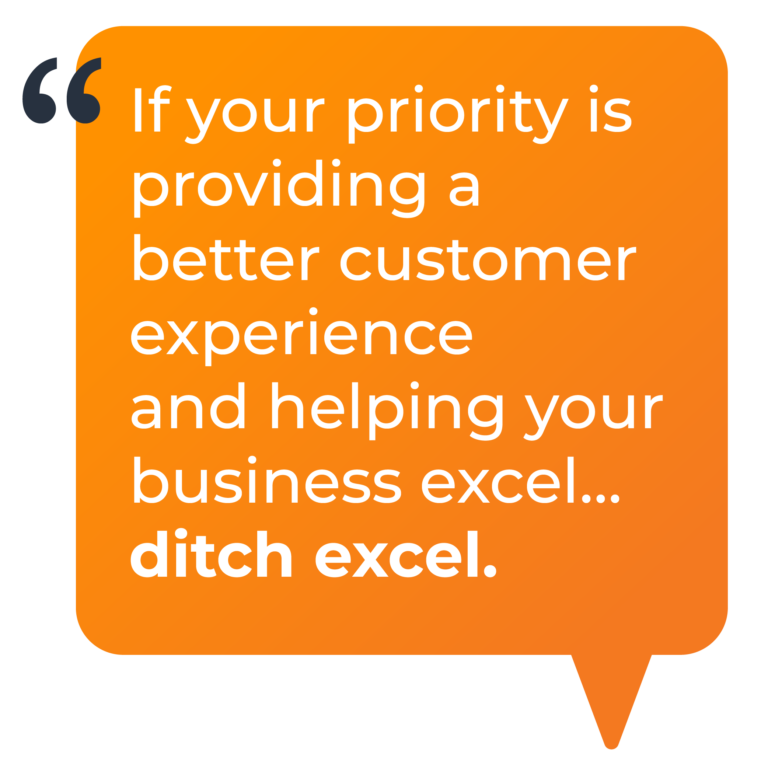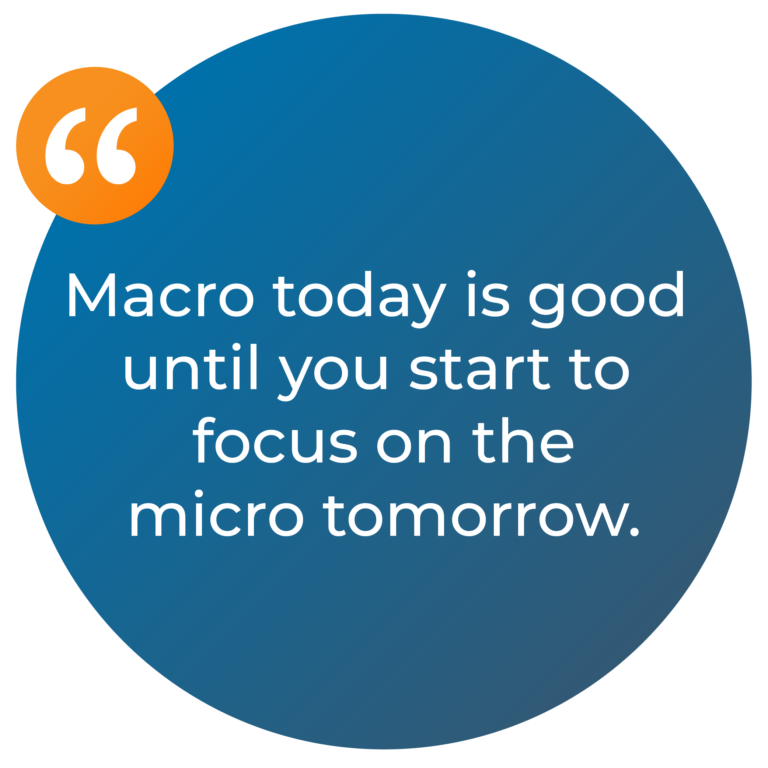How to buy a Loan Management Software in 2023
Advancements in loan origination, underwriting, embedded finance, and overall automation have given almost instant access to borrowers looking for funds. Not only has the barrier to entry significantly lowered for borrowers, but this ease of access has also caused their expectations to rise significantly.
Historically, lenders have taken advantage of these awesome advancements in all but one area: loan servicing.
What happens once a customer is obtained? From experience, we’ve seen that borrowers are shocked by the sharp decrease in customer experience when the time comes to service their loan.
So what’s the reason for this dissatisfaction?
Legacy Lending Tools & Practices No Longer Work

Many lenders have been using outdated practices and legacy tools that simply no longer address current lending industry needs. They only address part of the problem, failing to help their business leverage data to improve their customer experience (CX) and reap the benefits of automating processes.
For example, past solutions lacked data visibility and involved tedious manual processes, so lenders didn’t know how loans were performing and were prone to error. If your priority is providing a better customer experience and helping your business excel… ditch excel.
The evolution of loan management solutions has been driven by external factors as much as it has been an internal pull to streamline processes with automation and better understand data.
Ultimately, the digitization of lending services coupled with tighter privacy and regulatory requirements have spearheaded the creation of modern loan software that is transforming the entire loan management process.
And this new lending technology has quickly become a critical tool because it enables financial institutions to handle the growing workload demands and increasing regulatory challenges. Today’s solutions help businesses mitigate privacy risks and stay compliant with greater visibility — which is something legacy systems weren’t designed to offer.
As such, it’s no surprise that we’ve seen the loan management software market on a constant growth trajectory — it’s predicted to reach USD 24.6 billion by 2030 with a compound annual growth rate (CAGR) of 13.24% from 2021 to 2030.
Advancements in Loan Management Software
So let’s take a closer look at some of the bigger advancements loan management software has seen in the past few years.
Automation
Assigning, calculating, and managing loans can be pretty complex and time-consuming. Because of that, errors can happen at any stage: from the wrong assessment of a company or individual’s credibility to mistakes when calculating and reporting on important metrics. Automation solves this.
Automation may seem like a “buzz word” that’s thrown around the industry too much, but it often gets overlooked. We’ve seen first-hand the importance of automation with our clients. With the help of our technology and automation, our clients have been able to see a 300% increase in the number of loans serviced while keeping the same amount of employees.
Accurate calculations for different loan types, categorization and grouping of loans based on business needs, and automatic payments from the borrower’s account are just a few examples of what automation offers.
API
An Application Programming Interface (API) has become the standard for most loan management software. Think of an API as a waiter at your favorite restaurant. You know what you want off of the menu, give your order to the waiter, and he brings you back your filet mignon. An API connects your software to outside applications, which then return that data back to your LMS.
A big advantage of an API is your LMS becoming your single source of truth for your lending processes, meaning the location in which all your borrower data and applications live. You can even have this data flow back to origination or underwriting to quickly approve future loans for your better borrowers.
Constant innovations and new ways to lend are common. An API provides flexibility to quickly adapt to current trends without having to completely rebuild your software. Essentially, a modern API-first solution helps your business future-proof itself while leveraging your investment in the current ecosystem.
Data Visibility

As a lender, having access to loan performance is priority number one. Surprisingly, this hasn’t always been the case. Views, dashboard and custom reporting about your loan portfolio is a newer innovation in the loan management space.
New views show exactly how your loans are performing. With new ways to look at data, your business can obtain a bird’s eye view of all relevant information to make better business decisions.
When evaluating your LMS ask yourself:
- Can my data go in?
- What can I do with my data?
- Is my data compliant?
- Can I get my data out?
It’s your data. You should own it.
Creating New Customers
Borrower demands are at an all time high. The pandemic changed the lending landscape forever. Borrowers needed more flexibility and new arms of lending, which they got. Now, constant innovation in lending tech is expected and lending is in an era of product led growth.
This means that there are currently more ways than ever to create new borrowers, and having a LMS that is on the forefront of innovation is crucial in appealing to and appeasing borrowers that have new expectations from their lenders.
Criteria to Look Out For When Buying a Loan Management Software
Now that we’ve talked innovation, let’s hit some LMS essentials. Not all loan management solutions were created equal. It’s important to choose software that will give you all the features and tools you need and can scale your business.
Here’s some of the top criteria:
Criteria #1: Data Movement
One important factor is how difficult it is to integrate your current data into the new platform’s ecosystem. Basically, answering the question: how easily does your data get in? Being able to bring in your data easily will shorten the onboarding process and reduce the associated costs of implementing a new solution.
Criteria #2: Flexibility and Scalability
Your diverse business needs should be matched with a flexible, scalable solution. Why buy a stagnant “out-of-the-box” product which was last updated to prepare for y2k?
Rigid systems are the enemy of innovation and can set you seriously behind when new lending tech emerges. Look for a system that implements a client feedback process to assist in improving the overall product.It’s a pain to switch systems. Making the right scalable choice today also avoids future switching, which saves your business time and money down the line.
Criteria #3: Reporting
Reporting capabilities are important for different stakeholders, But those capabilities are usually limited if the solution does not control all your loan processes from a centralized space. Your chosen software solution should help your business get information in but also out.
Reporting becomes useful as you record client notes, manage client information, create new loans, and record all relevant financial statements. Ideally, you’ll have document management style capabilities.
Criteria #4: Integration
The right loan management solution should also have vast integration capabilities to fit your current ecosystem, no matter its complexity. Look for:
- Integration capabilities with third parties
- Ease of integrating with your existing systems (CRM, ERP, etc.)
- API flexibility — does the solution have native APIs to enable a seamless integration path?
The finance technology space is driving APIs on an industry-wide basis. APIs provide flexibility and allow you to create a single source of truth, helping the application information flow from the origination phase to collection.
Criteria #5: Configuration
A user-friendly platform is essential since not all loans are made equal. Financial institutions need a solution that offers configuration for various loan terms, payment schedules, and other features.
For example, when “Buy now pay later” bursted into the lending scene, lenders scrambled to support the new lending type, some softwares needed a complete rebuild to allow it. For software like LoanPro, supporting this new product was as simple as a 5-minute configuration.
Criteria #6: Data Visibility
We touched on this earlier, but it’s important to restate… You should own your data.
In the past, lenders did not know how loans were performing, which made it challenging to make data-empowered business decisions. Today’s loan management market is vastly different. To ensure you are taking worthy risks, you need better data visibility.
Criteria #7: Customer Success Team
Choosing the right loan servicing solution is not only a software choice but a people choice. Implementing a new software solution can be time-consuming and complicated. Make sure you choose a reliable partner that offers proactive guidance to power your innovation.
Answer these questions when choosing a new vendor:
- What kind of customer success team does the vendor have?
- Does the vendor offer onboarding support? How long is this support provided for?
- Does the vendor offer additional training further down the road?
- How are updates and upgrades managed? Are they automatic?
Criteria #8: Credibility and Compliance
To meet increasing privacy requirements, you need a vendor that makes compliance easy for your lending business. Select a vendor that adheres to the latest privacy standards and has certifications like:
- SOC 1 Type I
- SOC 1 Type II
- SOC 3
- PCI DSS
A privacy-conscious vendor will offer loan management software with in-built, robust security processes to mitigate any privacy risks for your business or clients.
To learn more about how a modern solution can help with compliance, check out our other article, “How Core Lending Software Streamlines Compliance.”
Overlooked Factors When Choosing Loan Management Software

In addition to buying loan management software that ticks all the boxes, you also want to think about
how the technology will align with your lending business needs now and in the future. Make sure to not overlook the following
- Macro vs. Micro: A solution in its entirety might be great, but as you focus on the day-to-day tasks, you will require specific features to address these needs. The right solution will target all of these, be it customization, payment processing flows, or accurate calculations for amortization.
Remember, Macro today is good until you start to focus on the micro tomorrow.
- Configuration: Other than configuring loan types, which we talked about earlier, there will be various other configurations that will help your LMS run to its full potential.
Configuration during the implementation process is often overlooked. Find out what needs to be configured beforehand and how the solution fits into the picture. Also, look at consideration costs, timeframes, and adoption scales.
- Future-proofing: A current solution’s complexity might help future-proof your business. It may be enticing to run with a generic “out-of-the-box” solution, but what will it look like in 5-10 years? consider your current lending needs, but choose a solution that allows you to be proactive and address your future needs too.
Conclusion
Automating your loan-lending processes ensures you set your business up for success. Whether the goal is to increase efficiency, save costs, or better serve customers — or even better — have all of the above, buying the right loan management software will help you do just that.
When buying loan software, look at the solution’s scalability, flexibility, configuration, integration, and data movement capabilities, but also the scale of the vendor’s support and their compliance certifications.
There's a lot to consider, but our Request for Proposal Process outlines the features discussed and more that will support your evaluation for your next LMS.
LoanPro’s loan management software was designed with all of the above criteria in mind. We offer a powerful solution that simplifies complex lending processes, helps you own your data, and powers your financial innovation. Test your innovation with LoanPro.




